*Critters we’ve seen on our
2014 trip so far: pronghorn, horse, llama,
elk, bison, grizzly, bighorn sheep, mule deer, Uinta ground squirrel, wolf,
black bear, moose, coyote, fox, bullsnake, bat, white-
 tailed jackrabbit
tailed jackrabbit
*Birds we’ve seen on our 2014
trip so far: bald eagle, grouse, osprey, magpie, red-tailed hawk, Canada goose,
great horned owl, American kestrel, sandhill crane, mountain bluebird, cliff swallow
[Click on any photo to enlarge.]
 This was the 36th year for the
Gardiner Rodeo & Parade. We had
checked out the parade two years ago, and though we couldn’t attend last year
because of work, we drove the 5 miles into town for this year’s event. The theme was “Red, White & Blue” and
patriotic decorations were abundant. It’s
This was the 36th year for the
Gardiner Rodeo & Parade. We had
checked out the parade two years ago, and though we couldn’t attend last year
because of work, we drove the 5 miles into town for this year’s event. The theme was “Red, White & Blue” and
patriotic decorations were abundant. It’s
 pretty much your typical small town parade, but there didn’t seem to be as many
participants as two years ago. However, there
were plenty of horseback riders and most folks were throwing candy to the
crowds from their decorated cars and trucks.
pretty much your typical small town parade, but there didn’t seem to be as many
participants as two years ago. However, there
were plenty of horseback riders and most folks were throwing candy to the
crowds from their decorated cars and trucks.
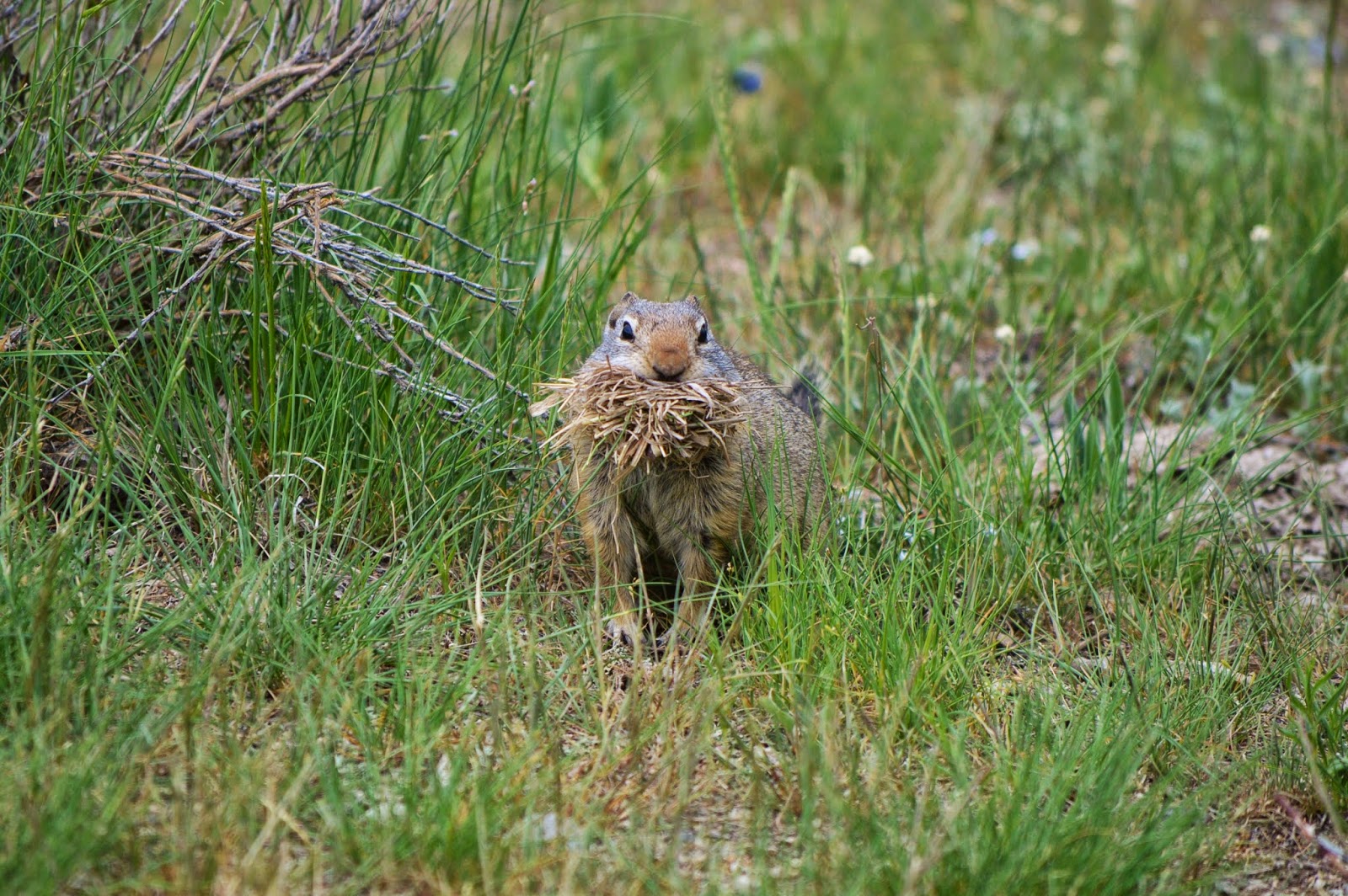 As you can tell from our posts,
the animals in Yellowstone are the big draw
for us from the littlest squirrel to the biggest bison and bears. This little guy (or girl) at left was just too funny! We also happened upon the grizzly sow again out in
Swan Lake Flats but this time there
As you can tell from our posts,
the animals in Yellowstone are the big draw
for us from the littlest squirrel to the biggest bison and bears. This little guy (or girl) at left was just too funny! We also happened upon the grizzly sow again out in
Swan Lake Flats but this time there
 were only 2 cubs with her. All sightings lately have been of only the
two cubs so we’re not sure what exactly happened to #3.
were only 2 cubs with her. All sightings lately have been of only the
two cubs so we’re not sure what exactly happened to #3.
 Across from the parking lot for
the Calcite Springs overlook one day, we got to watch the antics of a couple of
young bighorn sheep rams. Looks like
they were practicing their headbutting for when they get a little older!
Across from the parking lot for
the Calcite Springs overlook one day, we got to watch the antics of a couple of
young bighorn sheep rams. Looks like
they were practicing their headbutting for when they get a little older!
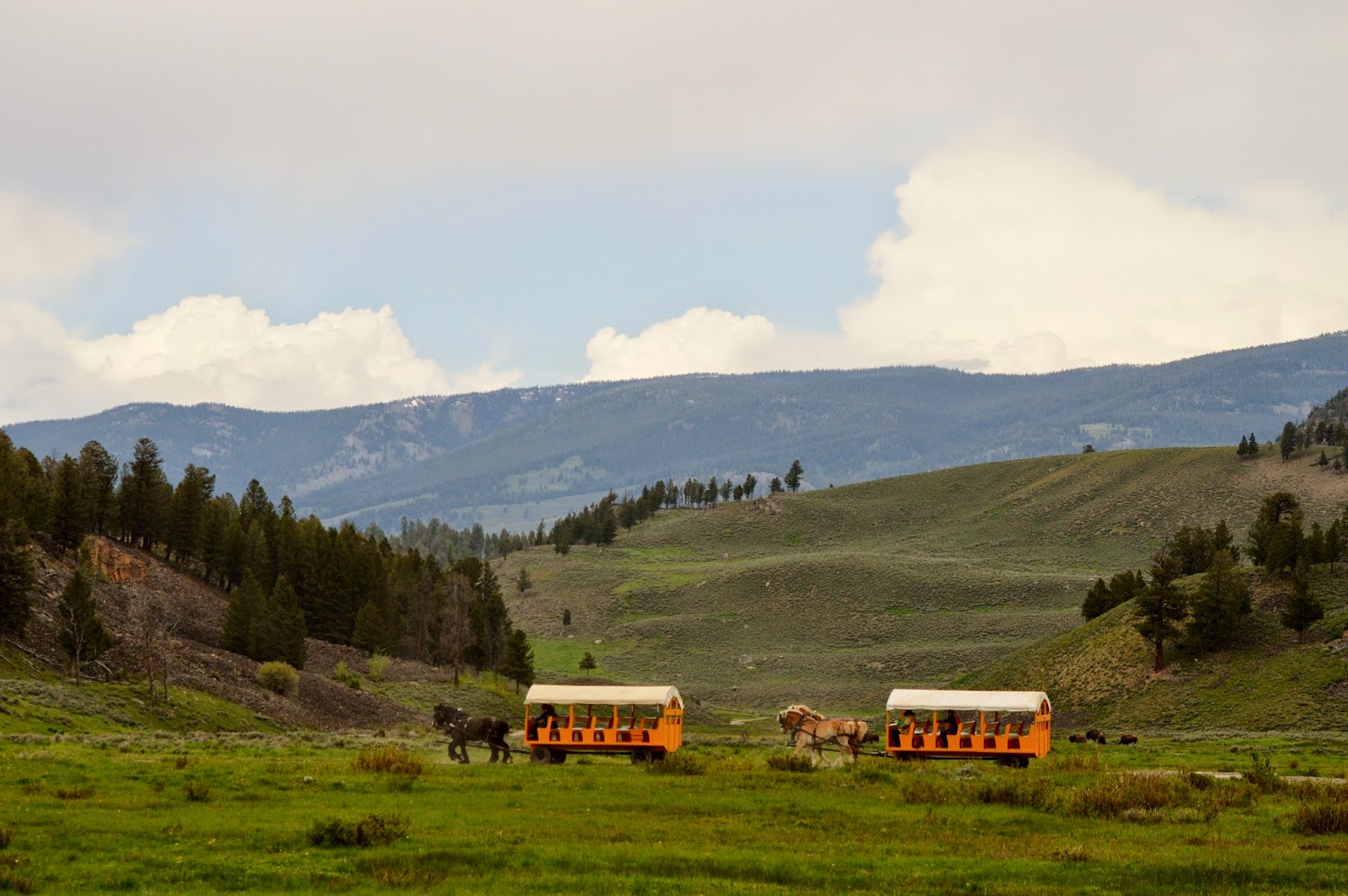 One of the activities you can
experience while in Yellowstone is the Old
West Dinner Cookout where for $57 (plus tax) you can ride in a covered wagon to
a cookout with all the fixin’s while a cowboy sings around the campfire. We’ve never been, but we get to see the
wagons sometimes when
One of the activities you can
experience while in Yellowstone is the Old
West Dinner Cookout where for $57 (plus tax) you can ride in a covered wagon to
a cookout with all the fixin’s while a cowboy sings around the campfire. We’ve never been, but we get to see the
wagons sometimes when
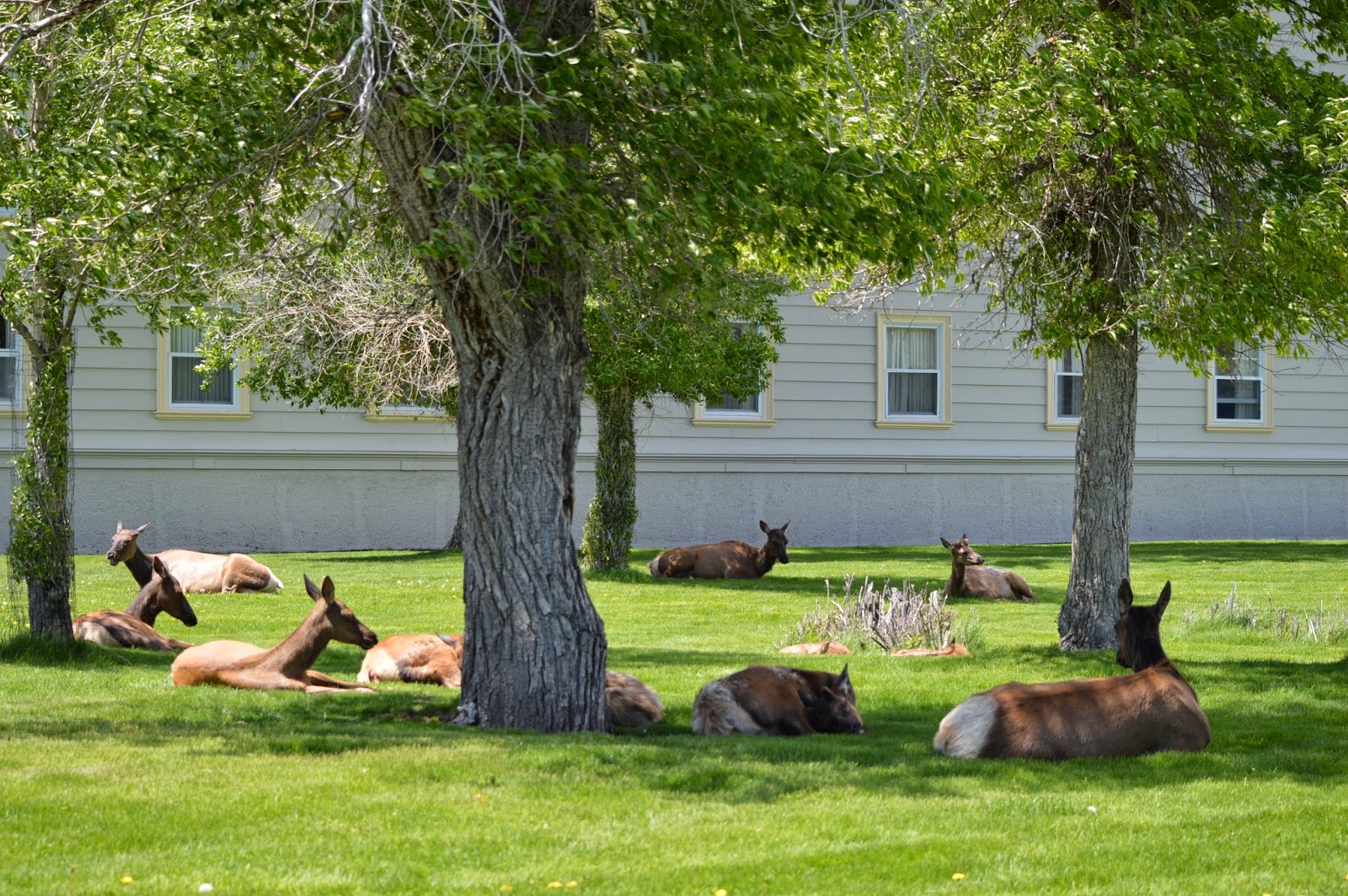 we’re out in the Tower Roosevelt area. However, if you’re looking for a cheaper form
of relaxation, maybe you can take inspiration from the elk and simply lie around
on the grass under the trees!
we’re out in the Tower Roosevelt area. However, if you’re looking for a cheaper form
of relaxation, maybe you can take inspiration from the elk and simply lie around
on the grass under the trees!
 Spotting a mountain bluebird is
always a joy. The male’s brilliant blue
color is striking and easily seen, and though we’ve had a few in the
campground, it seems I’ve never had the camera handy. So it was a treat when I was able to snap
this guy posing in a tree across from the Mammoth Terraces. Since the females are less bright and grayer,
we weren’t sure if we’d ever seen one but heard there was a mountain bluebird
nest on the road to the Slough Creek Campground. While out that
Spotting a mountain bluebird is
always a joy. The male’s brilliant blue
color is striking and easily seen, and though we’ve had a few in the
campground, it seems I’ve never had the camera handy. So it was a treat when I was able to snap
this guy posing in a tree across from the Mammoth Terraces. Since the females are less bright and grayer,
we weren’t sure if we’d ever seen one but heard there was a mountain bluebird
nest on the road to the Slough Creek Campground. While out that
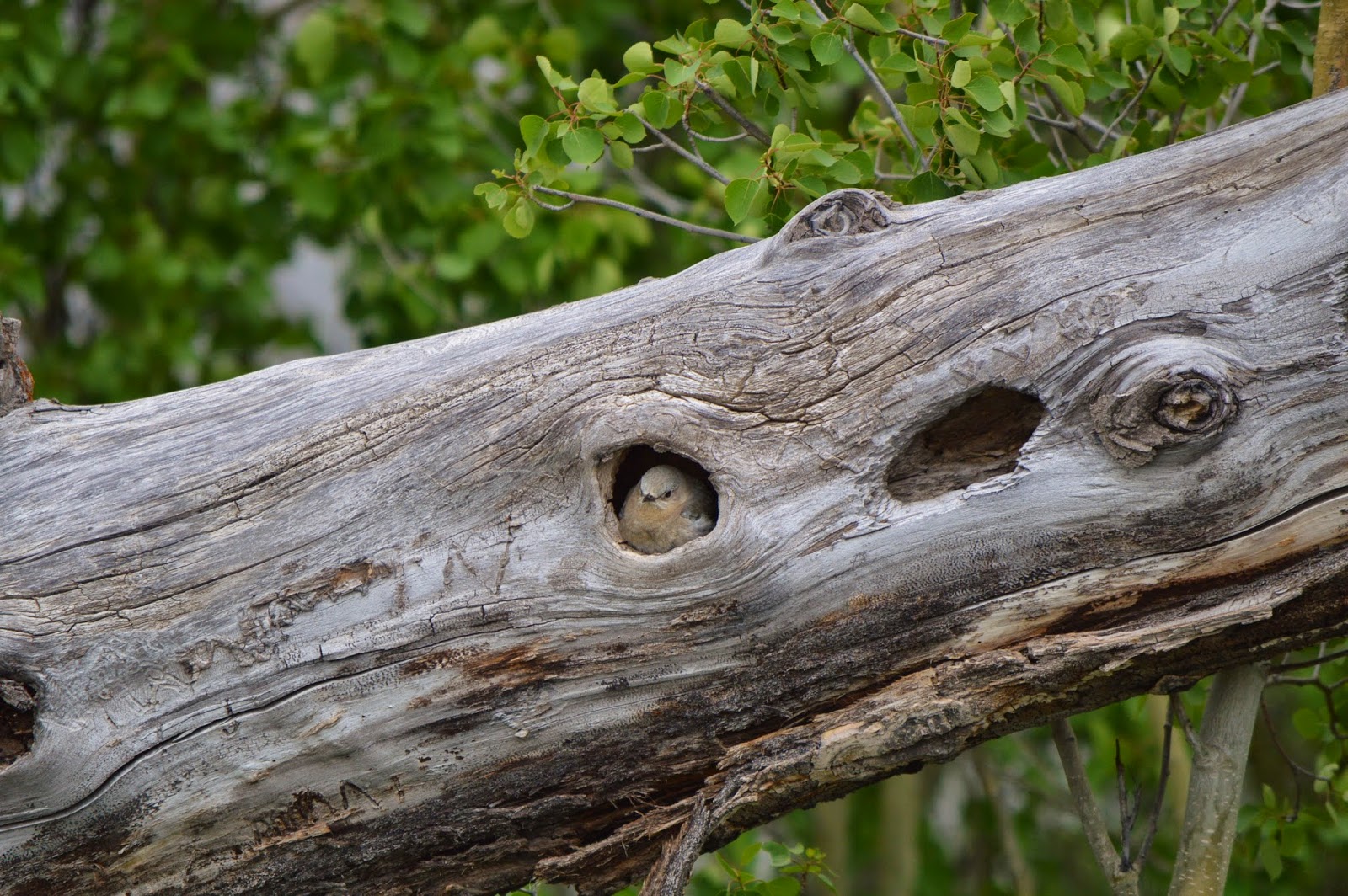 way one day, we found a
handful of photographers, tripods at the ready, who were waiting for the male
to return. These birds are
cavity-nesters, and though we never saw him, the female finally popped her head
out of her hole and sat there for some great photo ops.
way one day, we found a
handful of photographers, tripods at the ready, who were waiting for the male
to return. These birds are
cavity-nesters, and though we never saw him, the female finally popped her head
out of her hole and sat there for some great photo ops.
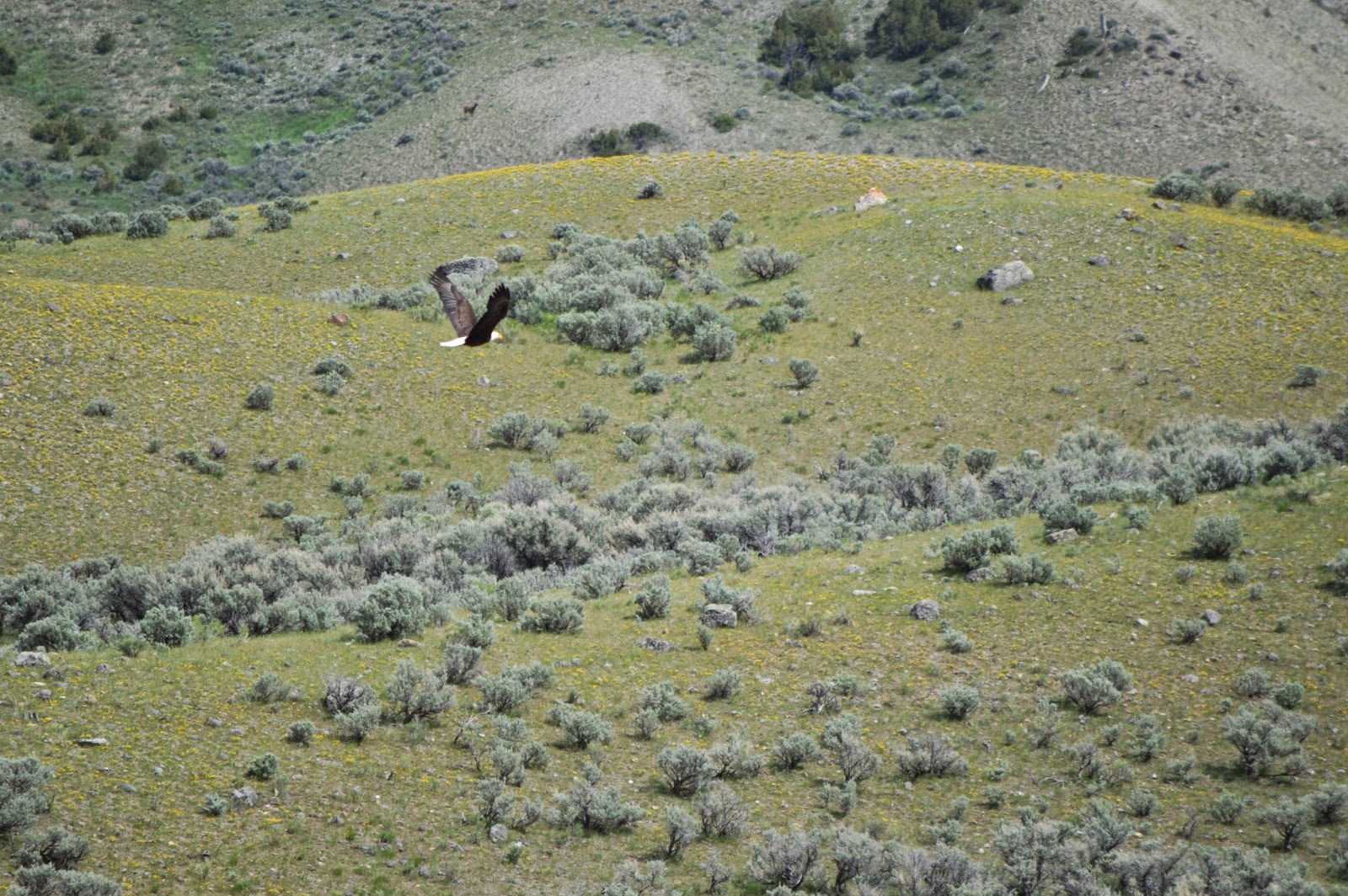
While on
the subject of birds, we were thrilled to see a bald eagle flying over our site, then across the road a few weeks ago.
Though we’ve seen them throughout the park, this was the first time we
had seen one here. What a magnificent
sight! Then a few hours later we
 also witnessed
a male pronghorn walking through the sage not far from our site, another
critter we rarely see in the campground.
I just think they are one of the coolest looking animals.
also witnessed
a male pronghorn walking through the sage not far from our site, another
critter we rarely see in the campground.
I just think they are one of the coolest looking animals.
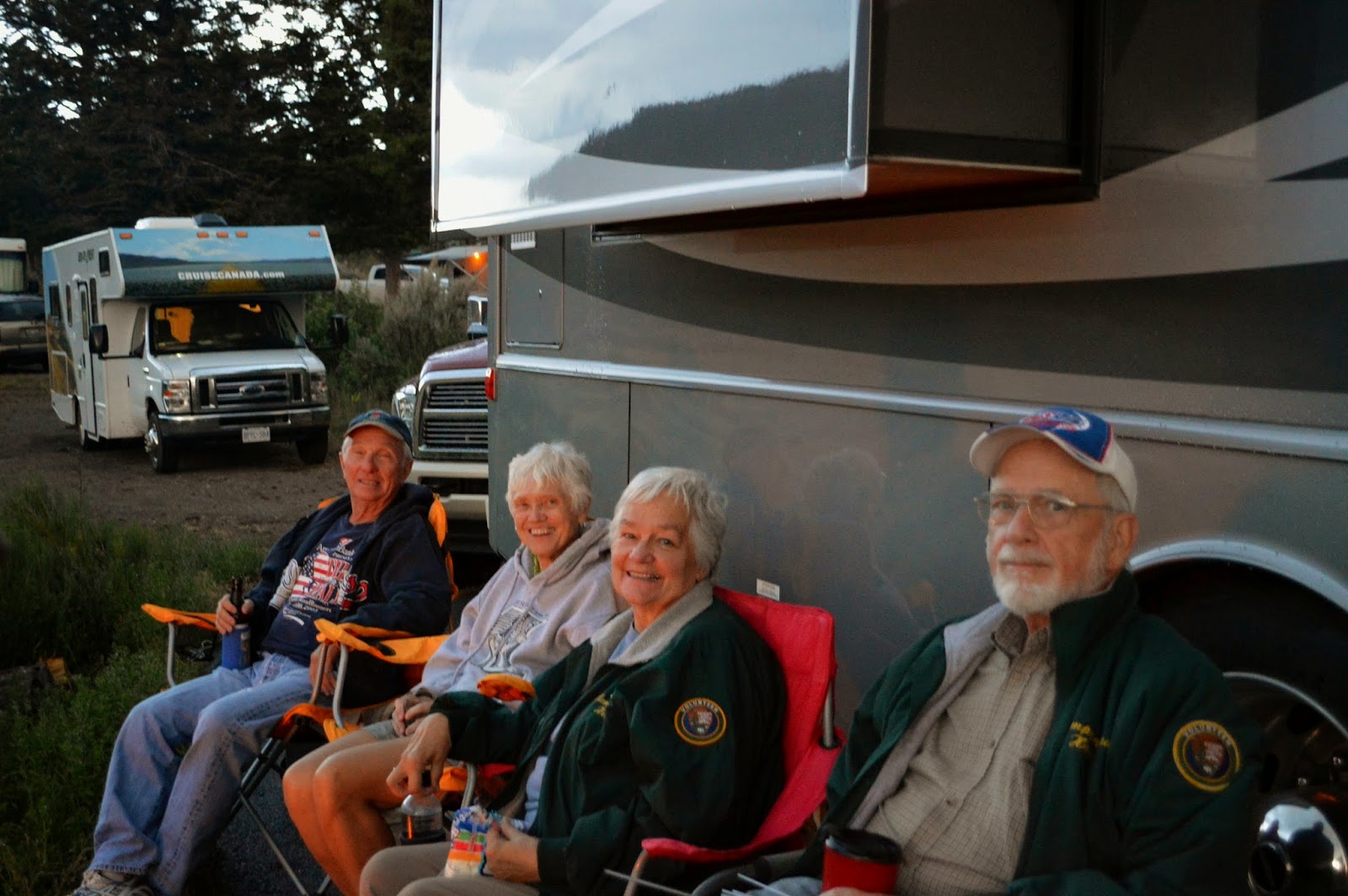 Before
closing out this post, I want to introduce you to our co-hosts this
summer…Ernie, Tammy, Jill, and Chip. This
photo was taken at our 4th of July campfire.
It’s been a good summer so far and we’ve enjoyed getting to know each
other better.
Before
closing out this post, I want to introduce you to our co-hosts this
summer…Ernie, Tammy, Jill, and Chip. This
photo was taken at our 4th of July campfire.
It’s been a good summer so far and we’ve enjoyed getting to know each
other better.
Yellowstone Tidbits:
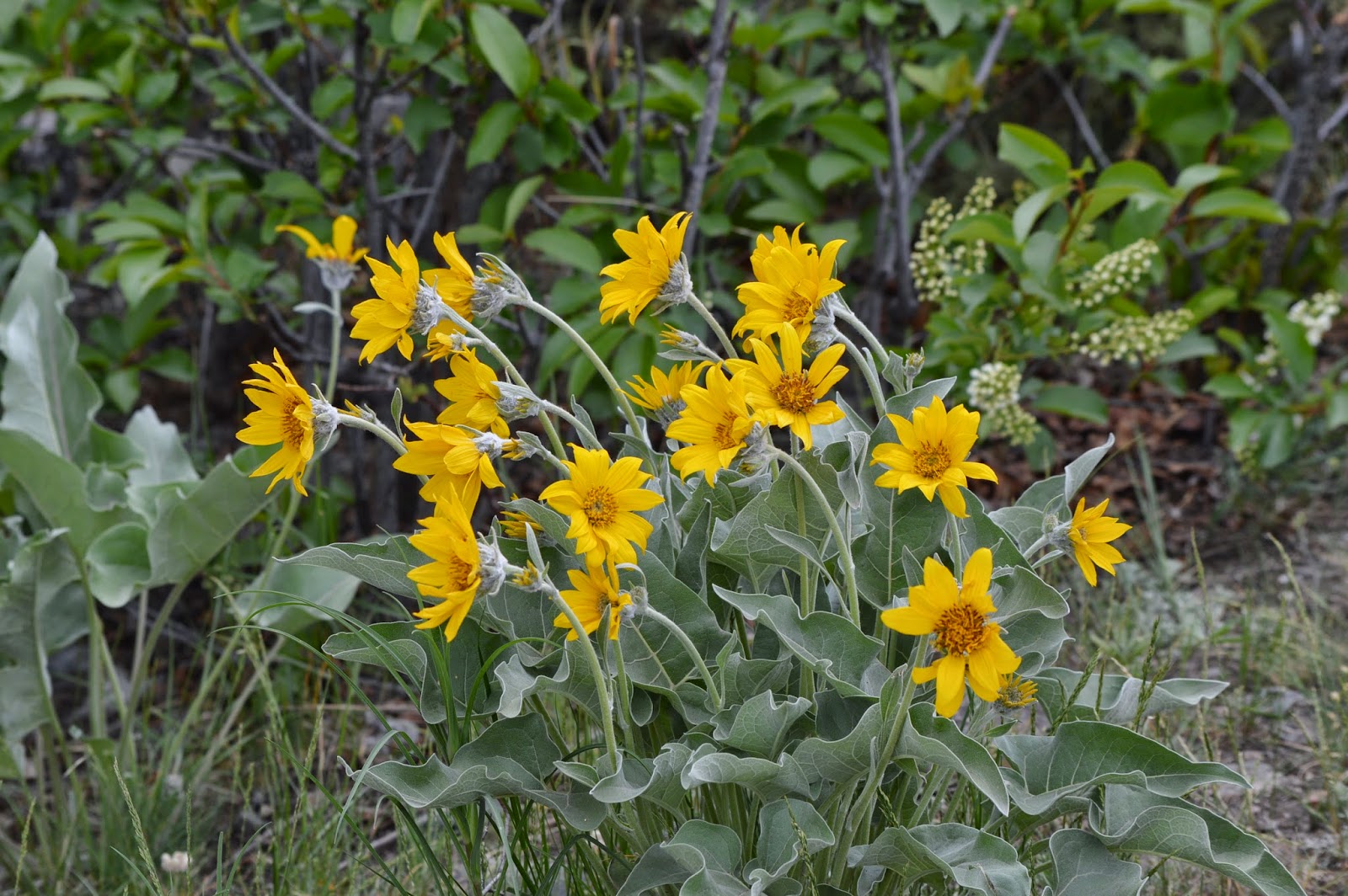
Yellowstone is home to over 1,700 species of native plants and over 170 species of exotic (non-native) plants.
The
mountain bluebird is the state bird of Idaho
and Nevada. The female chooses her mate solely on
the location and quality of the nesting cavity he offers her.
- Bison: Can run 35 mph and jump over objects 5
ft. high; male (bull) weighs up to 2,000 lbs., female (cow) weighs up to
1,000 lbs., young (calf) weigh 40-50 lbs. at birth and are up walking
within a couple of hours. Bison can
reach food 3 ft. below the snow’s surface.
- Bighorn sheep: male (ram) weighs 174-319 lbs., female
(ewe) weighs up to 30 lbs.; young (lamb) 8-10 lbs. at birth. Rams’ horns can weigh 40 lbs. and their
skulls have two layers of bone above the brain that act like a shock
absorber for collisions during the head-on butting that occurs during the
mating season.
